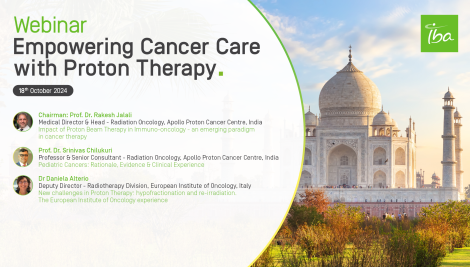Subtitle
Proton Therapy for Head and Neck Cancer: A 12-Year, Single-Institution Experience A
A study by the MD Anderson group evaluated the outcomes of 573 patients treated at the institute. Oropharynx (33.3%; n = 191), paranasal sinus (11%; n = 63), and periorbital tissues (11%; n = 62) were the most common primary sites.Patients with T3/T4 or recurrent disease comprised 46% (n = 262) of the cohort.
The intent of PT was definitive in 53% (n = 303), postoperative in 37% (n = 211), and reirradiation in 10% (n = 59).At a median follow-up of 2.4 years, 88 patients (15%) had died and 127 (22%) developed disease recurrence. The overall survival, local-regional control, and disease-free survival at 2 and 5 years were, respectively, 87% and 75%, 87% and 78%, and 74% and 63%.Maximum toxicity (acute or late) was grade 3 in 293 patients (51%), grade 2 in 234 patients (41%), and grade 1 in 31 patients (5%).
There were 381 acute grade 3 and 190 late grade 3 unique toxicities across 212 (37%) and 150 (26%) patients, respectively.There were 3 late-grade 4 events across 2 patients (0.3%), 2 (0.3%) acute-grade 5, and no (0%) late-grade 5 events. The authors concluded that the overall results from this prospective study of our initial decade of experience with PT for HNC show favorable disease control and toxicity outcomes.


